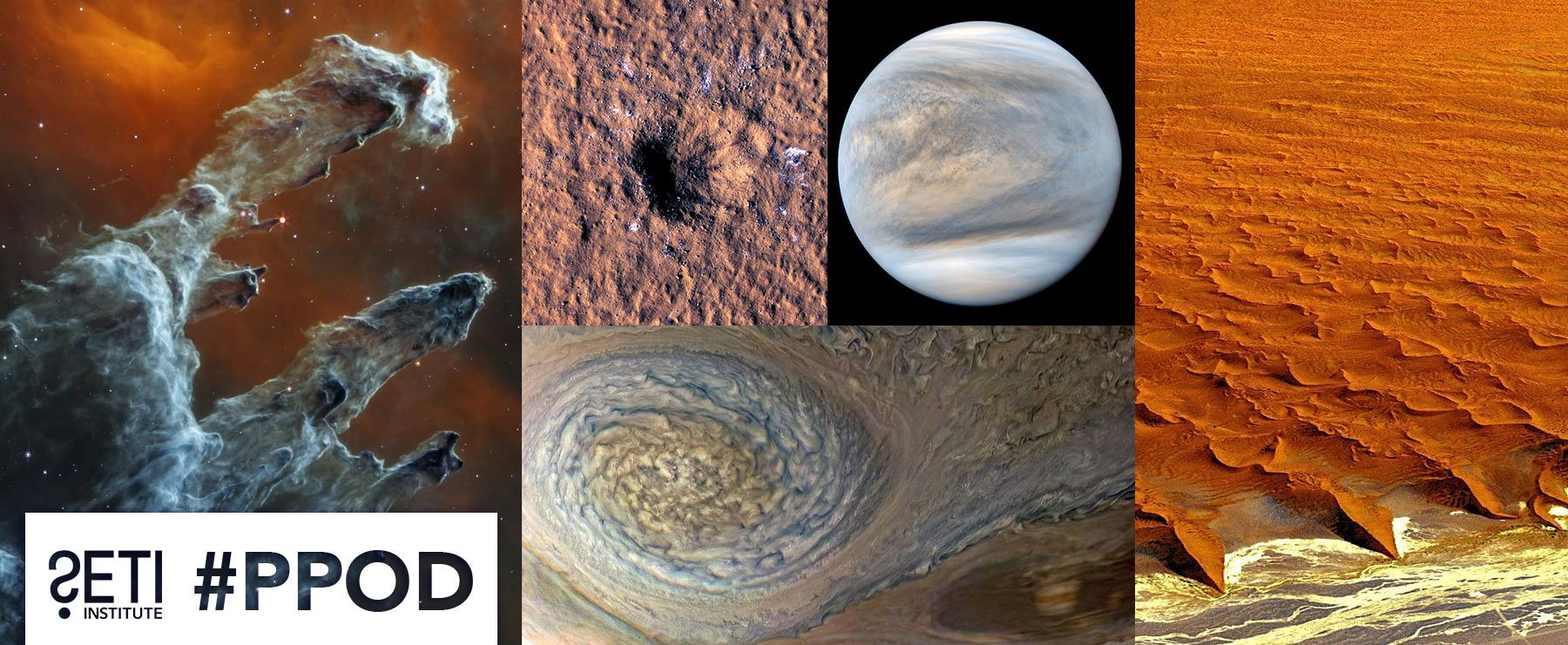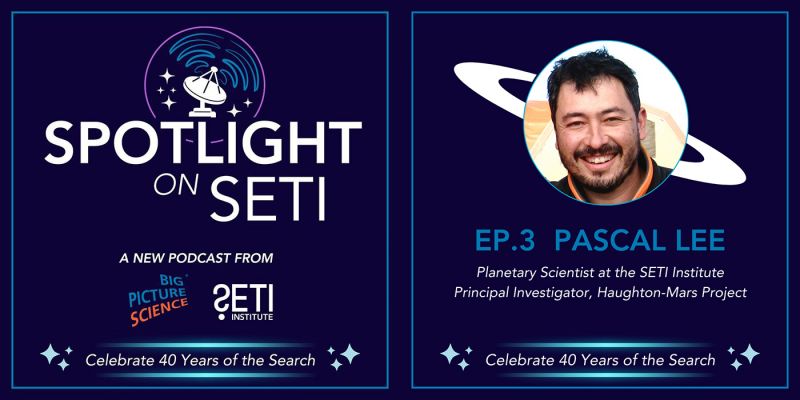
Planetary Picture of the Day
Week of October 31, 2022
Winds, Swirls, Impacts and more . . . images to give us pause.
Monday, October 31, 2022

Credit Image and Caption: SCIENCE: NASA, ESA, CSA, STScI
IMAGE PROCESSING: Joseph DePasquale (STScI), Alyssa Pagan (STScI)
Haunting Portrait
JWST Reveals Dust, Structure in Pillars of Creation! In mid-infrared light, the Pillars of Creation appear otherworldly. Dust in JWST's image is like the dawn. It is an essential ingredient for star formation. Though cloaked, these pillars are bursting with activity. Newly forming stars hide within these dark gray chambers, and others, like red rubies, have jumped into view. Over time, JWST's mid-infrared image will allow researchers to deeply explore the gas and dust in this region, and more precisely model how stars form over millions of years.
Tuesday, November 1, 2022

Credit: JAXA/ISAS/DARTS/Kevin M. Gill
Sister Planet?
Here is Venus as seen in ultraviolet, taken by JAXA's Akatsuki orbiter in February 2021. Processed from raw images by Kevin M. Gill.
Wednesday, November 2, 2022

Credit: NASA/JPL-Caltech/University of Arizona
Martian Impact
When a giant meteoroid struck Mars, the seismometer aboard NASA's InSight lander recorded the vibrations – and the Mars Reconnaissance Orbiter got a visual confirmation of the impact site.
Hear what the impact sounded like to InSight's instruments and see more about how the robotic explorers teamed up to capture this moment and what it can teach us about impacts on Mars and other planets: https://buff.ly/3FytK2s
Thursday, November 3, 2022

Credit: NASA/JPL-Caltech/SwRI/MSSS/Kevin M. Gill
Swirling Storms
NASA's Juno spacecraft collected the data for this image using the spacecraft's JunoCam imager during perijove 7 on July 11, 2017.
Friday, November 4, 2022

Credit: NASA/GSFC/MITI/ERSDAC/JAROS, and U.S./Japan ASTER Science Team
High Dunes in the Namib Desert
Namib-Naukluft National Park is an ecological preserve in the Namib Desert in southwest Africa, thought to be Earth's oldest desert. The park is the largest game park in Africa, and a surprising collection of creatures manages to survive in the hyper-arid region, including snakes, geckos, unusual insects, hyenas, and jackals. More moisture comes in as a fog off the Atlantic Ocean than falls as rain, with the average 63 millimeters of rainfall per year concentrated in the months of February and April.
The winds that bring in the fog are also responsible for creating the park's towering sand dunes, whose burnt orange color is a sign of their age. The orange color develops over time as iron in the sand is oxidized (like rusty metal); the older the dune, the brighter the color. These dunes are the tallest in the world, in places rising above the desert floor more than 300 meters (almost 1000 feet). The dunes taper off near the coast, and lagoons, wetlands, and mudflats located along the shore attract hundreds of thousands of birds.
This perspective view was created by draping an ASTER color image over an ASTER-derived Digital Elevation Model of the topography. The image was acquired October 14, 2002.





